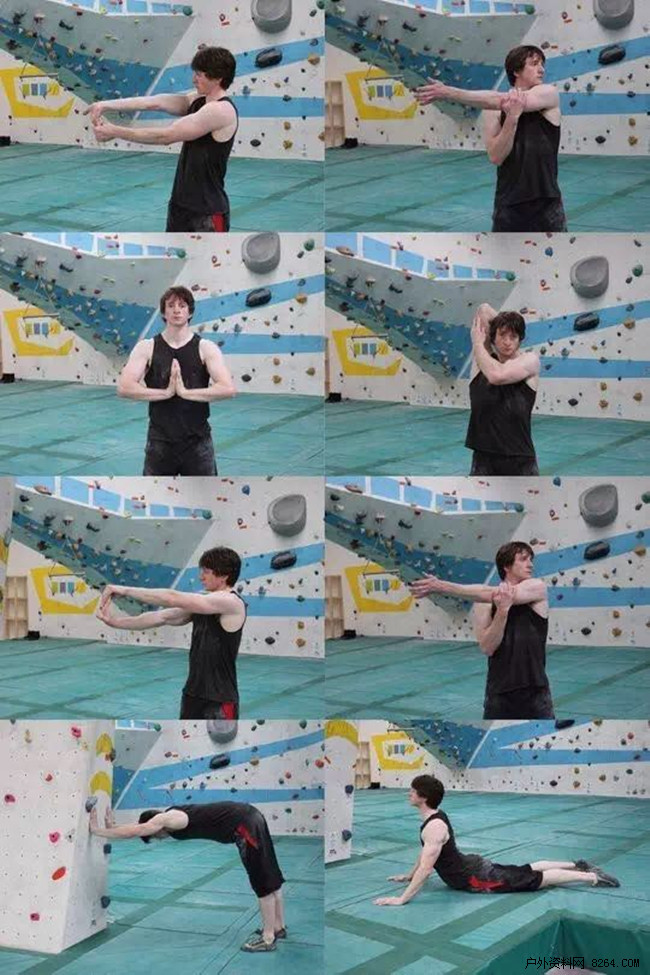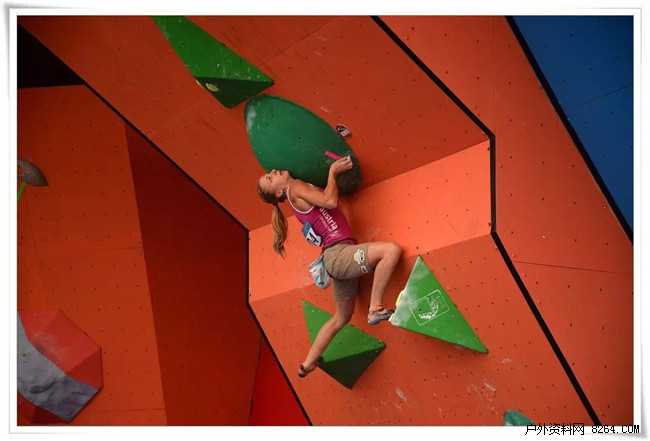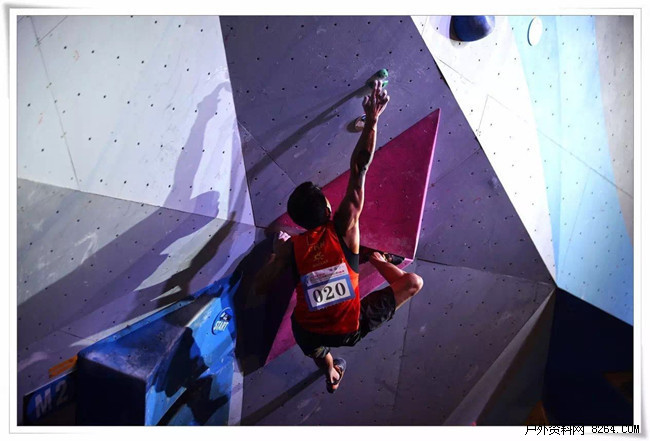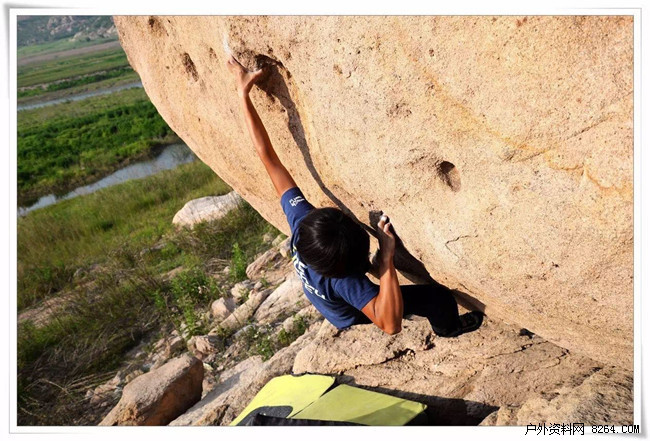In this article, 10 articles are given on how beginners can improve indoor bouldering levels and how to increase your field climbing levels through indoor bouldering.
With the rising trend of domestic bouldering halls, the popularity of boulders has soared in recent years. For lovers who have just contacted boulders and rock climbing, indoor bouldering is an ideal place for practice and training. For experienced climbers, their feline winters, training, and socializing venues are all within the Boulder Pavilion. This article puts forward some basic suggestions for indoor bouldering enthusiasts for reference. There are many similarities between indoor and outdoor, and there are also subtle differences. I hope these suggestions will play a role in climbing lovers.
You or the rock friends around you have no such thing. Once you enter the rock hall, change your clothes, say hello to your friends, and you start climbing, even if you have warm-hearted rock friends, you will not do it systematically. Is swallowing dates.

Photo by: Photo by David Flanagan.
1, warm up
If you want to climb well, be efficient and avoid injury, then it is very necessary to come to a warm-up. Warm up as a habit before every climb, but also be patient. If you can't see the buddies already on the "wall", you will be slow to warm up. Prepare a full range of warm-ups an hour before you are ready for extreme training and climbing.
Your warm-up should include the following three parts:
Pulse: If you are not walking or riding to the pavilion, you can do a short jog or skipping. It takes a few minutes.
Stretch: Move your fingers, wrists, elbows, shoulders, neck, feet, buttocks, and ankles in sequence. All parts of the activity are mainly concentrated in the upper body. Remember, your goal is to lubricate the joints and relax the muscles without having to increase your joint activity. (You can do this after climbing)
Climbing: Starting from climbing some very easy routes or traversing some large points, the construction is smooth and effective movement. Gradually increase the difficulty, rest between the line climbing.

2, think ahead
Climbing and bouldering are often mistaken for a sport that requires a lot of strength. However, human power does not become a major factor in the level of climbing. Technology is the decision whether you become a good climber. To build a good cognitive habit, from the beginning of your climbing career, focus on technology.
Before you begin to try a route, you should first study and consider how to climb, and quickly develop a plan. For example, you will decide on this route, how to use hand and foot points, and climbing order. After simple grooming, start again. Climbing.
If you are climbing, some movements and techniques are not the same as you think. You don't have to panic and adjust randomly. After you come down, summarize the reasons, see if you have climbed as planned, if there is any room for improvement, etc. Wait, prepare for the next increase.

3, watch other climbers climbing
It is very useful to observe carefully when others are climbing the line you are trying to try, but don't blindly imitate someone else's climbing order. Each person's strengths, weaknesses, and physical characteristics are different, so their actions may not be suitable for you, but they can find ways to use them in their climbing.
Each bouldering circuit is not just a way of climbing. It requires the climber to diverge and try. You will quickly discover that nothing is more satisfying than you find another way to climb a route.
4, focus on balance
Balance is a gentle agent that combines all rock climbing techniques. In climbing terms, balance is defined as "the relationship between a climber's physical center of gravity and the underlying foundation." Your center of gravity is theoretically a point. Your entire body is focused on this point. It is usually located above the navel. The basis of the support is the area formed by the connected contacts (your current hands and feet).
You should aim for climbing in a slow, controlled style. When you reach two points, your body should remain static. In many cases, bouldering is stable when you force the next move, but if you find that every time you move your hand, the body swings, and the control is uncertain, then you need to pay more attention to your balance. And body movement position.

5, for your weaknesses practice
Whether or not a route is completed depends on many factors, and some key factors are not so obvious in the process of progress. For example, the climber is struggling to hang on a steep route and it's difficult to grab small points, let alone move on the line. They are always blamed for the lack of finger strength, but they have weak core strengths and are too slotted to move the body weight to the feet to share your finger pressure.
We are always happy to experience the happiest things. In terms of bouldering, we always spend most of our time climbing the lines that suit us. It often leads to weaknesses in us. If we ignore them, they will become even more pronounced, and as a result, the overall level will decline.
Spending time and energy on our weaknesses is a worthwhile investment. It can make you spend less effort to make great progress in weaknesses, and it is more cost-effective than having minor improvements in your strengths. In particular, most rock friends have limited training time.
6, indoor bouldering is safe
In terms of climbing, indoor bouldering is safe, but there are several things to keep in mind: Effective warm-up, you will be able to climb longer in the climb, nothing more frustrating than injury.
Never walk or stand in a potentially dangerous area under a climber. Make it a habit to check the safety of the ground before you jump off the rock. There are bouldering mats under the bouldering wall, but pay attention to the gaps and edges between the mats. The correct fall depends on the cushion on your legs, and do not rely on the protective habit of the cushion itself.
7, stay relaxed, do not be discouraged
The "fight or flight" response is not very useful for climbers. We encountered difficulties in the bouldering process. Most of the situations were due to panic caused by our tension and ignored some of our feet or hand points. When you start to grab random points on the rock wall and get into disarray, take a few deep breaths and take a good look at the hands and feet on the line. Calm down, often with unexpected surprises.
Failing to fall off is a common occurrence in bouldering. Don't be frustrated by these factors. Be patient and enjoy the fun of solving the route.
8, do not worry about the level
Each climber is different in length and length. Take them as an approximate reference. Do not let the level affect your climbing status and enjoyment.
9, cycle climbing
Cycling is a group of climbing exercises that bring together similar lines of similar difficulty. The concept of circulation originated in Fontainebleau, France, a holy site in Boulder, France. A group of climbers dedicated to Ascension climbed together to establish dozens of endurance routes. Today, most of the bouldering halls regularly set 10 to 30 lines of different difficulty to be distinguished by color, for bouldering enthusiasts to choose, and they must make good use of these line characteristics to improve their climbing ability.
To complete a simple cycle of climbing is a good warm-up or a good exercise in itself. In the circle of climbing, try each route, forcing you to spend more time and energy on your weaknesses, not on your strengths. This is a good way to focus on improving your skills and your overall ability to climb.

10, wild bouldering
Whether it is winter or summer bouldering on real outdoor rock, it is very pleasant. The modern artificial rock wall simulates wild rock. It has a comfortable bouldering pad and a good climbing environment. Drinking coffee and coffee is rich in entertainment. When you are in the wild for the first time to make a real bouldering, you will certainly be surprised. That's right, the real bouldering is like this. After you have been bouldering on natural rocks in the wild for a long time, you can go back and use the aim of supporting the indoor rock pavilion.
Even the most creative indoor lines cannot be compared with the natural and varied field routes. If you want to climb the road instead of simply trying to become strong, the wild boulders will be you. The way to go.
mid-range fabric Sofa can be made of cashmere,linen and velvet,can black,white,grey,green,and so on many colors.many people like the home furnishing because of the cost performance,usually we put it in the reception room and Parlor.Our fabric sofas are not only suitable for your bedroom,but also suitable for hotel,villas,clubs. Welcome all the consumers from all over the world to buy the fabric sofas from us ,you can put it for own use, also can resell it to make some profit.
Fabric Sofa,Office Fabric Sofa,Modern Fabric Sofa,Fabric Sofa Sets
DELO SOFA , https://www.modernluxuryfurnitures.com